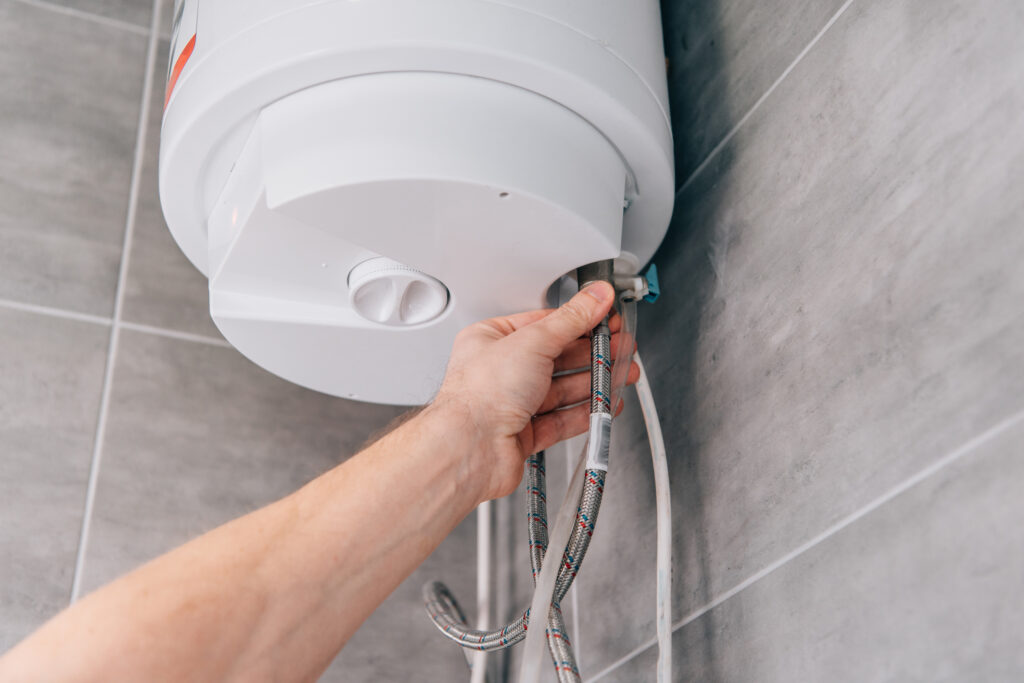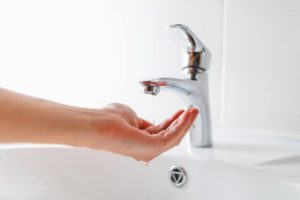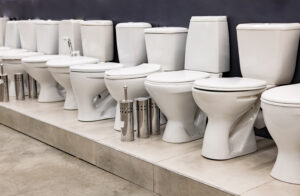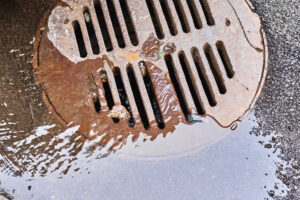A sudden loss of hot water can catch anyone off guard, but before you reach for the phone to call a plumber, there are a few simple checks to diagnose the issue. Like all household systems, your hot water unit can run into issues from time to time, but not all of them require professional help.
In many cases, the problem might be something simple, like a tripped circuit breaker or a switched-off system.
At GA Perry, we have years of experience helping Perth households restore their hot water quickly and efficiently. In this guide, we’ll walk you through a few hot water troubleshooting steps you can try yourself before booking a plumber.
How Your Hot Water System Works
Before you can fix a hot water issue, you need to know what kind of system you’re working with. Understanding the basics of how it works can help you troubleshoot issues more effectively and avoid unnecessary call-outs.
Broadly, hot water systems fall into two categories: storage systems and instantaneous (continuous flow) systems.
Storage Systems
These keep water hot in an insulated tank, ready to use whenever you need it. Common storage systems include:
- Electric Storage Heaters: These work like an electric kettle, using heating elements inside a tank to warm water. They’re usually affordable to buy but can be more expensive to run.
- Gas Storage Systems: These use a gas burner beneath the tank to heat water. Many keep a small pilot light burning continuously, which ignites the main burner when heating is needed.
- Solar Water Heaters; These systems collect heat from the sun using panels on your roof, transferring this heat to water stored in a tank. They rely on sunlight to function.
- Heat Pump Systems: Heat pumps extract warmth from the air to heat water, similar to how a refrigerator works but in reverse.
Instantaneous (Continuous Flow) Systems
Instead of storing hot water, these systems heat water on demand as it flows through the unit. Both electric and gas versions are available, and they provide hot water instantly without the need for a storage tank.
Key Components of Hot Water Systems
No matter what type of hot water system you have, most units share a few essential components that play a critical role in heating and maintaining your hot water supply. Understanding what these parts do can help you pinpoint potential issues and communicate clearly if you need professional help.
- Thermostat: The thermostat senses the water temperature and signals the heating element (in electric systems) or burner (in gas systems) to switch on or off to maintain the desired heat level. If your water is too hot, not hot enough, or fluctuates in temperature, a faulty thermostat could be the culprit.
- Heating Element or Gas Burner: Electric systems rely on one or more heating elements. These are metal coils that heat up when electricity passes through them, much like a kettle. Gas systems, on the other hand, use a burner that ignites to heat the water in the tank or on demand. If you’re not getting any hot water, a failed heating element or burner could be the issue.
- TPR Valve (Temperature Pressure Relief Valve): This safety valve is designed to release water (and pressure) from the tank if it gets too hot or if pressure builds up to unsafe levels. If this valve is leaking or constantly dripping, it may be faulty or not doing its job because of a larger issue with your system’s pressure or temperature regulation.
- Isolation Valve: The isolation valve allows you to shut off the water supply to your hot water system for maintenance, repairs, or in the event of an emergency. If you need to perform a reset or inspect your unit, it’s a good idea to know where this valve is located and how to use it.
- Circuit Breaker or Gas Control Valve: For electric systems, the circuit breaker in your switchboard protects the system from electrical overload. For gas systems, the gas control valve regulates the flow of gas to the burner and may include safety features like flame sensors or thermocouples.
- Anode Rod: Found inside storage tanks, the anode rod is a metal rod designed to attract corrosive elements in the water, preventing the tank from rusting from the inside out. Over time, the rod wears down and needs replacing. If neglected, tank corrosion can shorten the lifespan of your hot water system.
Why System Type Matters for Troubleshooting
Identifying what type of hot water system you have is essential for effective troubleshooting. Different systems fail in different ways, and knowing which one you have can help you pinpoint the likely cause much faster.
- Electric Storage Systems: These are prone to electrical issues. A common problem is a tripped circuit breaker or a failed heating element. You might notice no hot water at all, or that the water heats very slowly.
- Gas Storage or Continuous Flow Systems: Gas systems can be affected by issues like a blown-out pilot light, a faulty thermocouple, or gas supply interruptions.
- Solar Hot Water Systems: Solar systems depend heavily on weather conditions. On cloudy days or during winter, performance may drop. Most solar systems have a backup booster (electric or gas), and if that’s not working properly, you might run out of hot water even if the panels are fine.
- Heat Pump Systems: Heat pumps extract warmth from the surrounding air, which means they’re incredibly efficient, but can struggle in very cold climates. If your system is in a shaded, cold, or poorly ventilated area, it might not be working at full capacity.
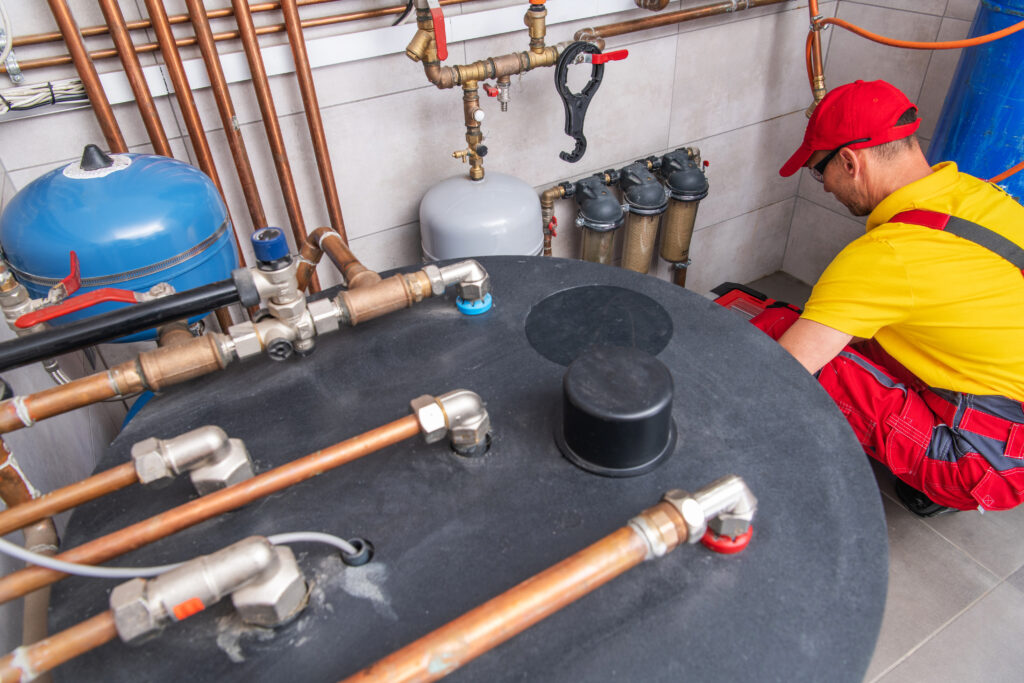
Start with the Symptoms You Notice
Different symptoms often point to specific problems, so take a moment to identify exactly what’s going wrong.
No Hot Water at All?
If you have no hot water at all, the issue could be with your system’s power or gas supply.
For electric systems, it’s worth checking your switchboard to make sure the hot water main switch is turned on. You should also look for any tripped circuit breakers or blown fuses that may have cut power to the unit.
In gas systems, confirm that your gas supply is active by testing other gas appliances, like your stove or cooktop. If those are working, it could be that the pilot light in your water heater has gone out and needs to be relit according to the manufacturer’s instructions.
Water Is Warm, But Not Hot
Getting warm but not hot water often points to a different set of issues. One common cause is a faulty thermostat, which may need adjustment or replacement if it’s not heating water to the desired temperature. Another possibility is sediment build-up at the bottom of your tank, which reduces heating efficiency and prevents the water from reaching the proper temperature.
In electric systems, a broken heating element may leave the system running at half power. Additionally, partially closed valves or incorrect temperature settings can also limit how hot the water gets.
Hot Water Runs Out Too Quickly
If your hot water runs out quicker than usual, there are also several factors to consider. Sediment inside the tank can reduce the space available for hot water storage. A failing heating element can also prevent the system from heating water properly or fast enough to keep up with demand.
Using multiple hot water appliances at once, like showers, washing machines, and dishwashers, can put extra strain on the system. In some cases, small leaks may cause your hot water to drain faster than it can be replaced. And if your system is nearing the end of its 8–12 year lifespan, a drop in performance could simply be a sign of age and wear.
Why is My Hot Water Not Working? 6 Simple Checks
Check #1: Is the Water Heater Switched On?
Sometimes the simplest explanation is the right one. Your home might have no hot water simply because the water heater has been switched off. This should always be your first check when troubleshooting.
Locating the power switch or isolation switch:
Electric water heaters usually have a dedicated power switch near the unit or on your main electrical panel. Look for switches labelled “Hot Water” or “HWS.” Some models have a power switch mounted directly on the heater itself.
For gas water heaters, check the gas isolation valve on the gas line feeding the heater. This valve often has a red or yellow handle. When it’s parallel to the pipe, the gas is flowing; when perpendicular, the gas supply is off.
Don’t forget to inspect the water supply isolation valves as well. These are found on the cold water intake pipe to your hot water system. If this valve is closed, no water will enter the system, and you won’t get hot water out.
Always prioritise safety: switch off the circuit breaker before touching any internal components on electric heaters.
Off-peak electricity supply:
Electric heaters often run on “off-peak” tariffs, supplying power during specific hours. If you regularly run out of hot water, your system might be restricted by this schedule or there is an issue with the water heater’s timer or thermostat settings. Keep in mind electric water heaters need several hours to fully heat water after power returns.
Check #2: For Gas Heaters – Has the Pilot Light Gone Out?
A common cause of no hot water in gas systems is an extinguished pilot light. This is the small flame that ignites the main burner.
Your pilot light is off if:
- There is no hot water at all
- There is no visible flame through the inspection window
- The main burner fails to ignite
- The pilot flame that’s yellow, orange, or red instead of steady blue
A properly functioning pilot light remains lit continuously to ignite the burner safely and acts as a safety device to cut off gas flow if it goes out.
How To Safely Relight A Pilot Light
- Turn the gas knob to “Off” and wait 5 minutes to let any residual gas clear
- Locate the pilot assembly through the inspection window or access panel
- Set the knob to “Pilot” and press down
- While holding the knob, ignite the pilot using the igniter button or a long lighter
- Keep holding the knob down for 30-40 seconds after lighting
- Slowly release the knob and confirm the pilot stays lit
- Turn the knob to “On” if successful
NOTE: Do not release the knob too soon, attempt lighting without waiting for gas to clear, or ignore your manufacturer’s instructions, as doing so can create a dangerous gas buildup and increase the risk of fire or explosion. Always follow the safety guidelines carefully to protect yourself and your home.
When To Call A Professional
While many basic checks and minor fixes can be safely handled at home, there are critical signs that indicate you should immediately stop troubleshooting and call a licensed professional. Gas and hot water systems involve safety risks, so knowing when to seek expert help is essential.
- Smelling gas. Evacuate immediately and call your gas provider
- Pilot light won’t stay lit due to thermocouple or gas valve issues
- Strange noises or repeated pilot outages
Check #3: Thermostat and Temperature Settings
If you notice your hot water is consistently warm but never reaches the desired temperature, the thermostat is often the culprit. The thermostat controls how hot your water heater heats the water, so a malfunctioning or incorrectly set thermostat can lead to lukewarm water. If you suspect your thermostat isn’t functioning correctly, here’s how you can safely test it:
- Turn off the power at the circuit breaker. Always disconnect electrical power before opening your water heater panels or handling electrical components.
- Remove the access panels and insulation to expose the thermostat(s). Most electric water heaters have two thermostats: one controls the upper heating element, and the other controls the lower element. Both need to be functioning correctly for the system to heat efficiently.
- Check for a tripped reset button. Many thermostats include a safety reset button that trips if the water overheats. If this button has popped, press it to reset the thermostat, then observe if the water heats properly.
Check #4: Look for Visible Leaks or Water Damage
Leaks around your hot water system can quickly escalate into serious problems if left unaddressed. Even small leaks can reduce your system’s efficiency and cause significant water damage to your home.
Leaks allow hot water to escape, lowering the pressure inside the tank and plumbing system. This means your water heater has to work harder and longer to maintain the desired temperature, resulting in increased energy consumption and higher utility bills.
Some signs to watch out for include:
- Puddles or moisture near the base or along pipes: Standing water or dampness around the unit often signals a leak. Even a small, slow drip can eventually cause puddling.
- Water stains on floors or walls: Discolouration or warping on walls and floors near your water heater can be a sign of ongoing leaks that may have been unnoticed for some time.
- Rust or corrosion on tanks, fittings, or pipes: Visible rust or corrosion is a warning sign that moisture has been present and could indicate compromised integrity of the system components.
- Dampness or dripping at pipe connections: Loose or worn fittings can cause slow leaks, which may be visible as damp spots or active dripping around joints and valves.
To detect slow or hidden leaks, dry the suspected area thoroughly and place paper towels around it. Check the towels after a few hours to see if they’ve become wet, which confirms a leak.
Common Causes of Leaks
- Faulty pressure relief valves: The temperature and pressure relief (TPR) valve is designed to release excess pressure from the tank to prevent explosions. If this valve becomes faulty or corroded, it may leak continuously.
- Loose or worn fittings: Over time, pipe fittings and connections can loosen or degrade, leading to drips or steady leaks. Tightening or replacing these fittings often solves the problem.
- Internal tank corrosion: When the tank itself corrodes from the inside, often due to an old or failing anode rod, water can seep through tiny holes and cause leaks. This usually indicates that the tank is nearing the end of its service life and needs replacing.
Check #5: Listen for Strange Noises from the Tank
Another way to identify issues with your hot water heaters is by the way it sounds. Unusual noises coming from the tank are often one of the first signs that something’s not quite right.
Popping or Rumbling Sounds
These noises are usually caused by sediment buildup at the bottom of your tank. Over time, minerals from hard water settle and form a crusty layer. As water heats underneath this layer, steam bubbles form and burst, creating a popping or rumbling sound.
- This can reduce your system’s efficiency, increase energy usage, and cause the tank to overheat, shortening its lifespan.
Hissing or Sizzling
In electric water heaters, hissing or sizzling often occurs when heating elements are covered in sediment, causing them to overheat and make noise as water boils off the surface. In gas units, it could also be due to condensation dripping onto the hot burner, which is more common during cold weather or when the burner first ignites.
- Prolonged sizzling may point to scaling or burner issues that need professional maintenance.
Screeching or Whistling
High-pitched screeching or whistling sounds can be a sign of restricted water flow, usually caused by partially closed valves or a blocked outlet. This restricted flow can create excess pressure inside the tank, which could become dangerous if left unchecked.
These noises shouldn’t be ignored—they’re a sign your system may be straining to function properly.
Humming or Ticking
A low hum is often caused by loose heating elements vibrating as water flows past them. It’s usually not harmful but can be irritating.
Ticking or clicking noises may be caused by thermal expansion, where the pipes expand and contract as hot water moves through them. This is fairly common and not necessarily a problem unless it becomes more frequent or louder.
While some ticking can be normal, changes in sound or intensity can indicate that it’s time to check your system.
Check #6: Solar or Heat Pump Systems? Check These Extras
If your home uses a solar hot water system or a heat pump, troubleshooting can look a little different compared to traditional gas or electric units. While these systems are energy-efficient and environmentally friendly, they rely on external conditions, like sunlight or air temperature, to operate, so their performance can fluctuate. When something goes wrong, there are a few unique factors to consider.
For Solar Hot Water Systems
Solar water heaters rely on roof-mounted collector panels to absorb energy from the sun and transfer it to your water supply. If your hot water is underperforming, start by checking the following:
- Inspect the solar collector panels: Dirt, dust, bird droppings, leaves, or debris can build up on the panels and block sunlight. Even a thin film of grime can significantly reduce their efficiency. Gently cleaning the panels (or hiring a professional to do so) can help restore performance.
- Check for shading: Over time, trees grow and buildings go up, meaning panels that were once in full sun might now be partially shaded. Shade from foliage, chimneys, or other structures can dramatically impact the amount of heat your panels collect.
- Confirm panel orientation and angle: For optimal performance, panels should typically face north and be tilted to match your local latitude. If your panels aren’t positioned correctly, they may not be absorbing enough sunlight during the day.
- Look for visible damage: Cracks in the glass, damaged seals, or leaks in the piping can cause your solar system to fail. Damage may not always be obvious from the ground, so it’s best to have a qualified technician inspect the system if you suspect an issue.
For Heat Pump Hot Water Systems
Heat pumps work like an air conditioner in reverse. They extract heat from the air to warm your water. They’re extremely energy-efficient, but sensitive to environmental conditions:
- Know their optimal temperature range: Most heat pumps operate best in ambient temperatures between -5°C and 43°C. If the air temperature falls below or rises above this range, the system may automatically switch to its electric backup heater, which uses more energy and may not perform as efficiently.
- Watch for ice buildup: In colder weather, frost can form on the heat pump’s outdoor unit, especially if the defrost cycle isn’t functioning properly. Ice buildup restricts airflow and reduces heating efficiency. If you notice frost or ice accumulation, contact a technician for inspection.
- Listen for the compressor: If your system seems to be running but there’s no hot water, check whether the compressor is operating. A silent unit or excessive noise might indicate a fault in the compressor or fan motor.
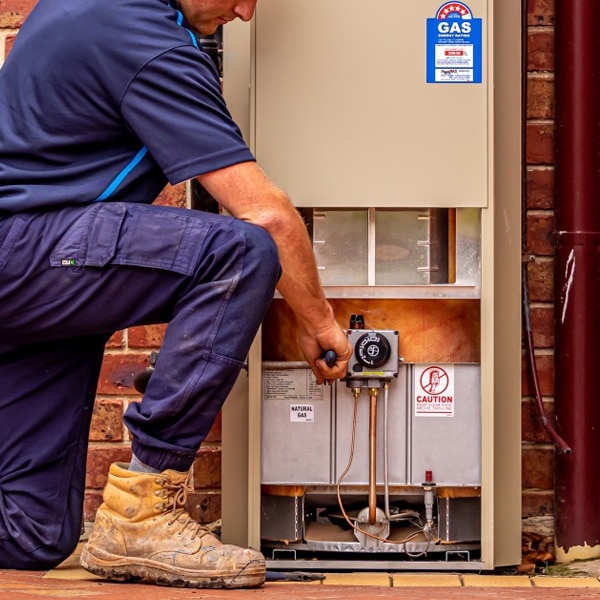
When to Call the Professionals
While many hot water problems can be sorted with simple checks, some situations call for expert help. Knowing when to step back and bring in a licensed professional protects both your safety and your system.
1. Burning Smells, Gas Leaks, or Electrical Hazards
If you smell gas (often described as a rotten egg smell), evacuate immediately and contact a professional. Gas leaks are dangerous and should never be handled alone.
Likewise, burning smells or signs of scorching near your electrical panel or hot water unit can signal wiring faults or overheating, both of which pose serious fire risks. Never attempt to inspect or repair electrical components yourself, especially when water is involved.
2. Recurring Problems After Resets or Relighting
If your pilot light keeps going out or your circuit breaker repeatedly trips, it is likely caused by an underlying fault in components like thermostats, thermocouples, or heating elements. Ignoring them or trying repeated DIY fixes can lead to bigger problems and more costly repairs.
3. Your System Is Showing Its Age
Hot water systems typically last 8 to 12 years. If yours is nearing the end of its life and showing signs of wear, like inconsistent temperatures, strange noises, leaks, or rising energy bills, it’s time for a professional assessment. A qualified technician can advise whether a repair or full replacement is more cost-effective.
4. DIY Risks: Safety and Warranty Concerns
Attempting your own repairs on gas lines, electrical parts, or pressure relief valves can be dangerous and, in many cases, illegal without proper licensing. Plus, most manufacturers’ warranties require professional servicing. DIY repairs can void your warranty, leaving you responsible for expensive replacements down the track.
What to Expect When a Professional Arrives
Licensed plumbers bring have the expertise, experience, and safety knowledge to identify and fix hot water problems quickly and correctly.
When you call a professional, you can expect:
- A thorough inspection of your hot water system
- Fast identification of the root cause of the issue
- Repair options that align with safety codes and local regulations
- Advice on how to improve system performance and reduce energy use
Need Help Troubleshooting Your Hot Water Problems?
Understanding how your hot water system works and knowing what to look for when something’s off allows you to handle small issues quickly and confidently. But when the problem goes beyond a basic fix or involves gas, electricity, or leaks, it’s time to bring in the experts.
At GA PERRY, we understand how disruptive a lack of hot water can be. That’s why we offer same-day service, no call-out fees, and a 24/7 emergency response across Perth’s metro area. Whether it’s a quick repair or a complete system replacement, our trusted team is ready to get your hot water running again.
